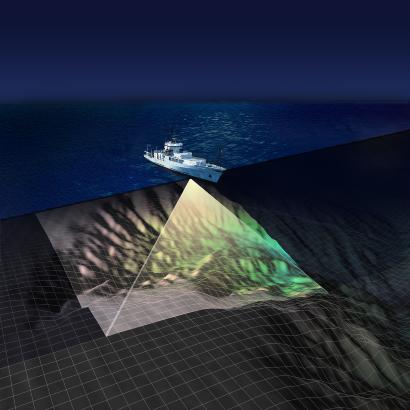OOI Mapping Cruise 2008
EM300 System
The EM300 is a type of sonar used to make regional maps of the seafloor.
Few Maps of the Seafloor
Less than 10 percent of the seafloor has been properly mapped, yet understanding the topography of the seafloor—the bathymetry—is required to safely install the regional scale nodes observatory. On this cruise of the R/V Thompson the primary goal is to map the seafloor sites where Node 1 and Node 3 will be located. The EM300 will also be used to map the edge of the continental margin as the Thompson travels south from the Juan de Fuca Strait to the Node 1 site.
Using Sound to Create Maps
Scientists will use the EM300 system that is mounted on the hull of the R/V Thompson for much of the mapping. This multibeam echosounder sends out multiple waves of sound that cover a distance on the seafloor that is roughly equal to two times the water depth. The sound signals that bounce off the seafloor are received back at the ship at different times. Computers on the ship process this information to determine water depth, which is then plotted as a bathymetric map. On this cruise, we expect the EM300 to generate maps at 50-meter resolution.


